http://bestertag.optokoppler.org/?p=34


test 7
http://bestertag.optokoppler.org/?p=27
test 6
http://bestertag.optokoppler.org/?p=23
test 5
http://bestertag.optokoppler.org/?p=19
test 4
http://bestertag.optokoppler.org/?p=15
test 3
http://bestertag.optokoppler.org/?p=12
test
http://bestertag.optokoppler.org/?p=8
test 2
/?p=1
Welcome to OPTOKOPPLER.ORG. This is your first post. Edit or delete it, then start blogging!
Lieserpfad Vulkaneifel
http://biketravel.optokoppler.org/?p=22
I recently discovered the Lieserpfad in the area Vulkaneifel. It is a lovely singletrack in a quit valley. One of the greatest beyond the alps. There are different Routes you can drive depending on where you want to start and how long it should be. I didn't try all but want to in the future. Some short parts of the Track are quite hard to drive and I had to walk. Find two versions of the Track below. I rode the second one. Resolution of the second one ist not so great in some parts of the valley but I managed to get back to the starting point.
Self supported bike races
http://biketravel.optokoppler.org/?p=17
Since I often searched for a list of self supported bikeraces I decided to make my own list. It is ordered after country
DADAD
http://biketravel.optokoppler.org/?p=15
DASDFAASDFASFdcasdcvsdv
sdcascvas
http://biketravel.optokoppler.org/?p=5
asvasvasvasv
Hello world!
/?p=1
Welcome to OPTOKOPPLER.ORG. This is your first post. Edit or delete it, then start blogging!
thinking about / working on
http://exmedia.optokoppler.org/?p=106
 The series "thinking about / working on" features projects and processes of students, teaching staff and guests of exMedia, asking them to share thoughts on their current topics and give insight into their practice. The questions vary slightly each time and can be adapted by the interviewee. First in the series is Bill Dietz, professor for Sound in exMedia since 2016 .
* What is the current focus of your work? What themes or subjects are you currently addressing in your work?
Reception remains central. For a long time I imagined my work as a set of tools for reorienting listeners in relation to whatever they listen to. That is, I would give you back what you typically like hearing, but via some experimental sonic, performative process (more about that here). Lately, though, I'm more interested in something like the inverse - how music "as such" already reorients us and the sonic itself in its hypercomplex affective, emotional, mnemonic internalizations.
The series "thinking about / working on" features projects and processes of students, teaching staff and guests of exMedia, asking them to share thoughts on their current topics and give insight into their practice. The questions vary slightly each time and can be adapted by the interviewee. First in the series is Bill Dietz, professor for Sound in exMedia since 2016 .
* What is the current focus of your work? What themes or subjects are you currently addressing in your work?
Reception remains central. For a long time I imagined my work as a set of tools for reorienting listeners in relation to whatever they listen to. That is, I would give you back what you typically like hearing, but via some experimental sonic, performative process (more about that here). Lately, though, I'm more interested in something like the inverse - how music "as such" already reorients us and the sonic itself in its hypercomplex affective, emotional, mnemonic internalizations.
 * What kind of materials are important to you right now and how is this expressed in your work?
I'm listening a lot to the micro-rhythms and timbres of protest. To the specific asynchronicities of individual student voices in the choral reading against Charles Murray at Middlebury College on March 2nd, 2017. To the intervals between call and response in the voices of the activists that closed Stansted Airport to prevent deportations on March 28th, 2017.
I'm spending a lot of time transcribing these rhythms, and then trying them out elsewhere. Chopping vegetables in the rhythm of a particular usage of the human microphone, letting that specific rhythm penetrate and intervene in my everyday. Some of this material will be the basis for my piece, L'école de la claque, happening this fall at the Donaueschinger Musiktage (which is also the bibliographic twin of my current seminar at the KHM).
* Do you have an idol or is there an art form that you totally adore?
I've had a few things on loop - Syd's "Body" (Fin, 2017), TLC's "No Scrubs" (FanMail, 1999). Both are part of a playlist bound to a particular experience of intimacy. Calling on that state in listening, its after-sound, as I move through and between cities profoundly reorients me. At the same time, I watch others listening, in the train, on the street, doing pretty much the same thing with whatever they're listening to - being elsewhere. I imagine our mutual but not shared rejection of a world.
images: portrait of Bill Dietz, copyright Pieter Kers,
working space, copyright Bill Dietz
* What kind of materials are important to you right now and how is this expressed in your work?
I'm listening a lot to the micro-rhythms and timbres of protest. To the specific asynchronicities of individual student voices in the choral reading against Charles Murray at Middlebury College on March 2nd, 2017. To the intervals between call and response in the voices of the activists that closed Stansted Airport to prevent deportations on March 28th, 2017.
I'm spending a lot of time transcribing these rhythms, and then trying them out elsewhere. Chopping vegetables in the rhythm of a particular usage of the human microphone, letting that specific rhythm penetrate and intervene in my everyday. Some of this material will be the basis for my piece, L'école de la claque, happening this fall at the Donaueschinger Musiktage (which is also the bibliographic twin of my current seminar at the KHM).
* Do you have an idol or is there an art form that you totally adore?
I've had a few things on loop - Syd's "Body" (Fin, 2017), TLC's "No Scrubs" (FanMail, 1999). Both are part of a playlist bound to a particular experience of intimacy. Calling on that state in listening, its after-sound, as I move through and between cities profoundly reorients me. At the same time, I watch others listening, in the train, on the street, doing pretty much the same thing with whatever they're listening to - being elsewhere. I imagine our mutual but not shared rejection of a world.
images: portrait of Bill Dietz, copyright Pieter Kers,
working space, copyright Bill Dietz
soundings
http://exmedia.optokoppler.org/?p=101
Soundings # presents concerts, performances, sound art and expanded lectures, initialised and invited by the "Klanglabor", happening at the Aula, KHM. Following is the list of all evenings, beginning with the #000. Further information can be read here and at the Klanglabor. The corresponding image is always one of the most current event. *
 soundings #004
thursday, april 27th, 2017
Rie Nakajima –
performance of the sound artist in her well-placed and -activated found objects
*
soundings #004
thursday, april 27th, 2017
Rie Nakajima –
performance of the sound artist in her well-placed and -activated found objects
*
 soundings #003
thursday, january 19th, 2017
John Duncan –
concert with current works, in connection with a workshop
*
soundings #003
thursday, january 19th, 2017
John Duncan –
concert with current works, in connection with a workshop
*
 soundings #002
thursday, december 15th, 2016
Jaki Liebezeit and Joseph Suchy
a pulsating, urban shamanism concert
*
soundings #002
thursday, december 15th, 2016
Jaki Liebezeit and Joseph Suchy
a pulsating, urban shamanism concert
*
 soundings #001
thursday, november, 3rd, 2016
Anton Lukoszevieze –
cello + video, the artist presents own pieces and works by Laurence Crane, Philip Corner and Joseph Kudirka
*
soundings #001
thursday, november, 3rd, 2016
Anton Lukoszevieze –
cello + video, the artist presents own pieces and works by Laurence Crane, Philip Corner and Joseph Kudirka
*
 soundings #000
thursday, october 20th, 2016
performances and electronic music –
works by Bill Dietz, hans w. koch & Dirk Specht, Franziska Windisch
soundings #000
thursday, october 20th, 2016
performances and electronic music –
works by Bill Dietz, hans w. koch & Dirk Specht, Franziska Windischa true story
http://exmedia.optokoppler.org/?p=22
 The exMedia animation studio presents
a true story
(based on a narrative by Lukian of Samosata)
Chapters by Amanda Teixeira, Carmen Rivadeneira, Elahe Garussi, Emmanuel Homberger, Emily Searle, Hye Young Sin, Johan Steven Serrano, Julia Jesionek, Karen Zimmermann, Kenneth Bergfeld, Lisa Bülow, Nausheen Javed, Priska Kubelka, Rebana Liz John, Yue Wang
Animation films, VR installation, video installation
At the animation studio, Filzengraben 18-24, KHM
This joint project was inspired by "A True Story", a parody-laden travel report, written by Greek-speaking and Syrian-origin author Lucian de Samosata. Written in the 2nd century A.D. it is one of the earliest well-known literary representations about travelling to outer space, alien life-forms and interplanetary warfare. Thought of as a satire against the contemporary and past histeriography, where it was common to uncritically present fantastic and mythological events as facts.
In the seminar A TRUE STORY was divided into 11 chapters, with each student choosing his or her own favourite one. The techniques chosen were as diverse and invidiual such as working with dolls, techniques of painting, drawing, life action or 3D animation as the final formats like film, video installation and VR. Aim of each work was to reconstruct the narrative out of the different parts and at the same time to open up a discourse on the relation between technology, fantasy and aesthetics.
The exMedia animation studio presents
a true story
(based on a narrative by Lukian of Samosata)
Chapters by Amanda Teixeira, Carmen Rivadeneira, Elahe Garussi, Emmanuel Homberger, Emily Searle, Hye Young Sin, Johan Steven Serrano, Julia Jesionek, Karen Zimmermann, Kenneth Bergfeld, Lisa Bülow, Nausheen Javed, Priska Kubelka, Rebana Liz John, Yue Wang
Animation films, VR installation, video installation
At the animation studio, Filzengraben 18-24, KHM
This joint project was inspired by "A True Story", a parody-laden travel report, written by Greek-speaking and Syrian-origin author Lucian de Samosata. Written in the 2nd century A.D. it is one of the earliest well-known literary representations about travelling to outer space, alien life-forms and interplanetary warfare. Thought of as a satire against the contemporary and past histeriography, where it was common to uncritically present fantastic and mythological events as facts.
In the seminar A TRUE STORY was divided into 11 chapters, with each student choosing his or her own favourite one. The techniques chosen were as diverse and invidiual such as working with dolls, techniques of painting, drawing, life action or 3D animation as the final formats like film, video installation and VR. Aim of each work was to reconstruct the narrative out of the different parts and at the same time to open up a discourse on the relation between technology, fantasy and aesthetics.
art's birthday bunker party
http://exmedia.optokoppler.org/?p=51
 Students and teaching staff of the Academy of Media Arts Cologne together with the team kunstgäste and Kulturbunker Mülheim presented an exhibition for the occasion of the 1,000,054 birthday of art. On January 17th, 2017 art's birthday is celebrated. Defined and arbitrarily set by the french Fluxus artist Robert Filliou in 1963, art's birthday since then is celebrated worldwide.
This special date and the circumstances surrounding the date, combined with the unusual site for celebrations (the old WW2-bunker in Cologne Mülheim), the setting for exhibition, concert, performances and installations was a challenging one. Build upon a seminar with the same title, under supervision by hans w. koch, Georg Trogemann, Karin Lingnau and Dirk Specht, the students developed a wide range of works and strategies to cope with the situation and site. Starting with fundamental issues of celebrating and presenting their ideas, site-specific (sound-)installations were situated and experimented with in the course of three days at the bunker itself.
Highlight was the last day of exhibition with a party for art's birthday and the artists themselves.
kunstgäste #5 | art‘s birthday bunker party | 13. - 17. Januar 2017
Exhibiting & performing are Vincent Brinkmann, Esteban Camilo Ferro, Sebastian Jazura, Dandan Liu, Sybella Perry, Fabian Podeszwa, Axel Pulgar, Timm Roller, Luka Lara Charlotte Steffen, Rihards Vitols, Lisa Zielke, Leah-Lilith Heeren, Julia König, Vered Koren, Andreas Niegl, Jiyun Park, Camilo Sandoval, Qimeng Sun and special guests Jonas Bolle, Elektro Body Force, Jay Data
more about the program here.
image: golden poster for the event, Rihards Vitols/Karin Lingnau
Students and teaching staff of the Academy of Media Arts Cologne together with the team kunstgäste and Kulturbunker Mülheim presented an exhibition for the occasion of the 1,000,054 birthday of art. On January 17th, 2017 art's birthday is celebrated. Defined and arbitrarily set by the french Fluxus artist Robert Filliou in 1963, art's birthday since then is celebrated worldwide.
This special date and the circumstances surrounding the date, combined with the unusual site for celebrations (the old WW2-bunker in Cologne Mülheim), the setting for exhibition, concert, performances and installations was a challenging one. Build upon a seminar with the same title, under supervision by hans w. koch, Georg Trogemann, Karin Lingnau and Dirk Specht, the students developed a wide range of works and strategies to cope with the situation and site. Starting with fundamental issues of celebrating and presenting their ideas, site-specific (sound-)installations were situated and experimented with in the course of three days at the bunker itself.
Highlight was the last day of exhibition with a party for art's birthday and the artists themselves.
kunstgäste #5 | art‘s birthday bunker party | 13. - 17. Januar 2017
Exhibiting & performing are Vincent Brinkmann, Esteban Camilo Ferro, Sebastian Jazura, Dandan Liu, Sybella Perry, Fabian Podeszwa, Axel Pulgar, Timm Roller, Luka Lara Charlotte Steffen, Rihards Vitols, Lisa Zielke, Leah-Lilith Heeren, Julia König, Vered Koren, Andreas Niegl, Jiyun Park, Camilo Sandoval, Qimeng Sun and special guests Jonas Bolle, Elektro Body Force, Jay Data
more about the program here.
image: golden poster for the event, Rihards Vitols/Karin Lingnau
Melanie Bonajo
http://lightra.optokoppler.org/?p=35
jigfjfgjdfjiet5ik57i57i
356jftjfju
http://lightra.optokoppler.org/?p=33
dgjdfgjfjfgj
56383568568
http://lightra.optokoppler.org/?p=30
45874584578
wewetwetwet
http://lightra.optokoppler.org/?p=28
wettewtwetwetw
wetwetwetwet
http://lightra.optokoppler.org/?p=26
wetwetewtwetwet
dgsdgsdgsdg
http://lightra.optokoppler.org/?p=23
dsgsdgsdg
wwetewtwehsf
http://lightra.optokoppler.org/?p=21
etwetewthdfahf
etwetwet
http://lightra.optokoppler.org/?p=19
wetwetwetwet
fsafasfasf
http://lightra.optokoppler.org/?p=17
asdfasfasfasfasf
new wasfol
http://lightra.optokoppler.org/?p=15
hoisdäohigvsdgsd
exMedia evening 3
http://exmedia.optokoppler.org/?p=19
 Experimental – Expanded – Existential –> exMedia
Tonights topic: "Rule and Play"
with Christian Faubel, Jonas Hansen, hans w. koch, Zilvinas Lilas
30th june 2016
Talks in VR, thoughts about rules and rhythms, rules without rules, a balancing music machine, playing in and as a system, painting by randomized lots in a human assisted democratic rendering engine...
The new department exMedia introduces itself on three summer nights. Exemplary projects and positions, small experiments and visualizations show a glimpse of the diverse topics in the domains of Animation/3D, Experimental Informatics, Hybrid Space, Sound and Transformation Design. As the start of the new department we are inviting to contemplate about how topics of globalization and movement of social change are concerning us. What kind of transformations determine our fields of work? How can we name universalia and synergies? What kind of role will experimental, expanded and existential moments play?
As an open format the evenings are reflecting the multiple approaches and perspectives of exMedia: images, sounds and objects enjoy the same priority as words, every moment and every spot in the Aula can become a source of discoursive and performative talks or encounters.
Every evening will be completed with collective culinary creations.
Experimental – Expanded – Existential –> exMedia
Tonights topic: "Rule and Play"
with Christian Faubel, Jonas Hansen, hans w. koch, Zilvinas Lilas
30th june 2016
Talks in VR, thoughts about rules and rhythms, rules without rules, a balancing music machine, playing in and as a system, painting by randomized lots in a human assisted democratic rendering engine...
The new department exMedia introduces itself on three summer nights. Exemplary projects and positions, small experiments and visualizations show a glimpse of the diverse topics in the domains of Animation/3D, Experimental Informatics, Hybrid Space, Sound and Transformation Design. As the start of the new department we are inviting to contemplate about how topics of globalization and movement of social change are concerning us. What kind of transformations determine our fields of work? How can we name universalia and synergies? What kind of role will experimental, expanded and existential moments play?
As an open format the evenings are reflecting the multiple approaches and perspectives of exMedia: images, sounds and objects enjoy the same priority as words, every moment and every spot in the Aula can become a source of discoursive and performative talks or encounters.
Every evening will be completed with collective culinary creations.
exMedia evening 2
http://exmedia.optokoppler.org/?p=14
 Experimental – Expanded – Existential –> exMedia
Tonights topic: “Form | Resilient City | Form”
with Peter Friedrich Stephan, Georg Trogemann, Frans Vogelaar
23rd june 2016
Talks and thoughts about the form of the city, aesthetics and formats for creating a new view on living and working in the city, thoughts about the creation of form in folding, visualization of mathematic convolutions and correlations, intonations of quotes and thoughts about design and transformation.
The new department exMedia introduces itself on three summer nights. Exemplary projects and positions, small experiments and visualizations show a glimpse of the diverse topics in the domains of Animation/3D, Experimental Informatics, Hybrid Space, Sound and Transformation Design. As the start of the new department we are inviting to contemplate about how topics of globalization and movement of social change are concerning us. What kind of transformations determine our fields of work? How can we name universalia and synergies? What kind of role will experimental, expanded and existential moments play?
As an open format the evenings are reflecting the multiple approaches and perspectives of exMedia: images, sounds and objects enjoy the same priority as words, every moment and every spot in the Aula can become a source of discoursive and performative talks or encounters.
Every evening will be completed with collective culinary creations.
Experimental – Expanded – Existential –> exMedia
Tonights topic: “Form | Resilient City | Form”
with Peter Friedrich Stephan, Georg Trogemann, Frans Vogelaar
23rd june 2016
Talks and thoughts about the form of the city, aesthetics and formats for creating a new view on living and working in the city, thoughts about the creation of form in folding, visualization of mathematic convolutions and correlations, intonations of quotes and thoughts about design and transformation.
The new department exMedia introduces itself on three summer nights. Exemplary projects and positions, small experiments and visualizations show a glimpse of the diverse topics in the domains of Animation/3D, Experimental Informatics, Hybrid Space, Sound and Transformation Design. As the start of the new department we are inviting to contemplate about how topics of globalization and movement of social change are concerning us. What kind of transformations determine our fields of work? How can we name universalia and synergies? What kind of role will experimental, expanded and existential moments play?
As an open format the evenings are reflecting the multiple approaches and perspectives of exMedia: images, sounds and objects enjoy the same priority as words, every moment and every spot in the Aula can become a source of discoursive and performative talks or encounters.
Every evening will be completed with collective culinary creations.exMedia evening 1
http://exmedia.optokoppler.org/?p=12
 Experimental – Expanded – Existential –> exMedia
Tonights topic: "Time and Space"
with Olivier Arcioli, Tania de Léon, Karin Lingnau, Raimund Krumme, Dirk Specht
16th june 2016
Quotes about the intertwining of time and space, collages and thoughts about time dilations, time travel and other peripheries, measuring time and space with shadows and light, reactive animations, body as a space and multidimensional sound arrangements.
The new department exMedia introduces itself on three summer nights. Exemplary projects and positions, small experiments and visualizations show a glimpse of the diverse topics in the domains of Animation/3D, Experimental Informatics, Hybrid Space, Sound and Transformation Design. As the start of the new department we are inviting to contemplate about how topics of globalization and movement of social change are concerning us. What kind of transformations determine our fields of work? How can we name universalia and synergies? What kind of role will experimental, expanded and existential moments play?
As an open format the evenings are reflecting the multiple approaches and perspectives of exMedia: images, sounds and objects enjoy the same priority as words, every moment and every spot in the Aula can become a source of discoursive and performative talks or encounters.
Every evening will be completed with collective culinary creations.
Experimental – Expanded – Existential –> exMedia
Tonights topic: "Time and Space"
with Olivier Arcioli, Tania de Léon, Karin Lingnau, Raimund Krumme, Dirk Specht
16th june 2016
Quotes about the intertwining of time and space, collages and thoughts about time dilations, time travel and other peripheries, measuring time and space with shadows and light, reactive animations, body as a space and multidimensional sound arrangements.
The new department exMedia introduces itself on three summer nights. Exemplary projects and positions, small experiments and visualizations show a glimpse of the diverse topics in the domains of Animation/3D, Experimental Informatics, Hybrid Space, Sound and Transformation Design. As the start of the new department we are inviting to contemplate about how topics of globalization and movement of social change are concerning us. What kind of transformations determine our fields of work? How can we name universalia and synergies? What kind of role will experimental, expanded and existential moments play?
As an open format the evenings are reflecting the multiple approaches and perspectives of exMedia: images, sounds and objects enjoy the same priority as words, every moment and every spot in the Aula can become a source of discoursive and performative talks or encounters.
Every evening will be completed with collective culinary creations.dfswgsdgsdgsdg
http://boell.optokoppler.org/?p=49
gddsg
Hello world!
/?p=1
Welcome to OPTOKOPPLER.ORG. This is your first post. Edit or delete it, then start blogging!
Photo
http://dunkelstufe.tumblr.com/post/58328187230
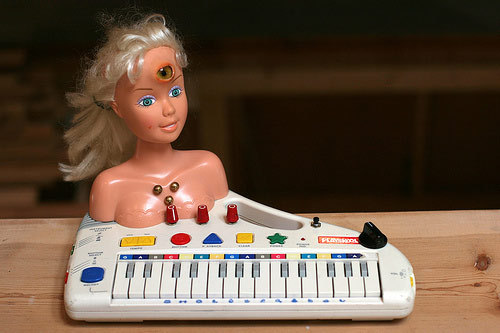
Photo
http://dunkelstufe.tumblr.com/post/57892449954
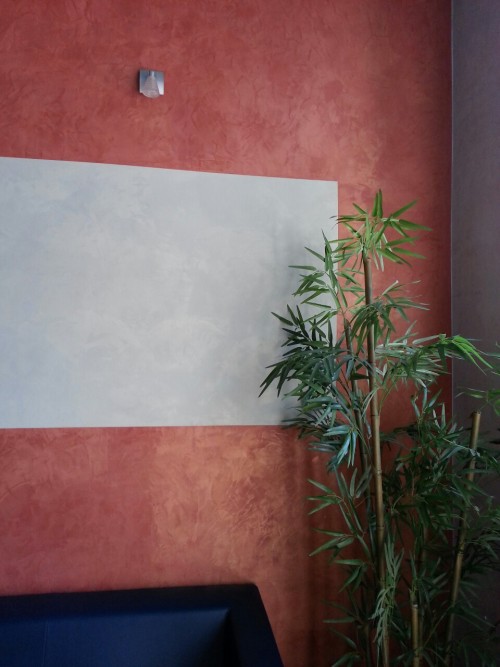
Photo
http://dunkelstufe.tumblr.com/post/56510312128
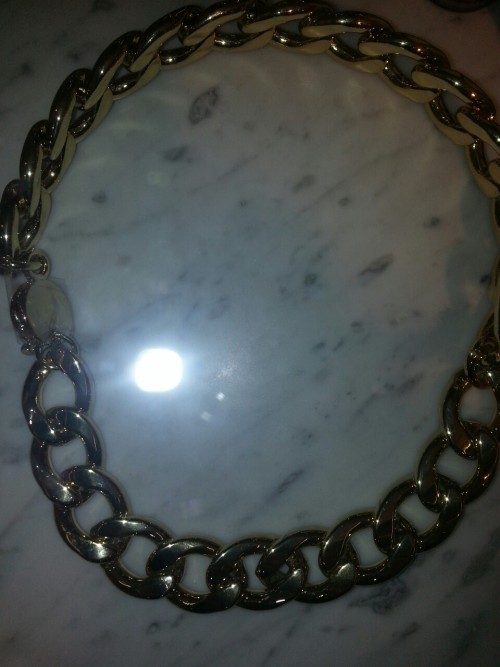
Photo
http://dunkelstufe.tumblr.com/post/56162989562
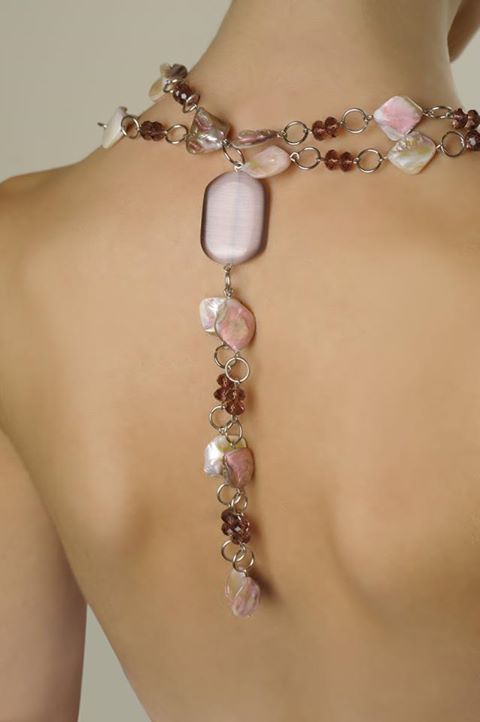
Photo
http://dunkelstufe.tumblr.com/post/55683665937
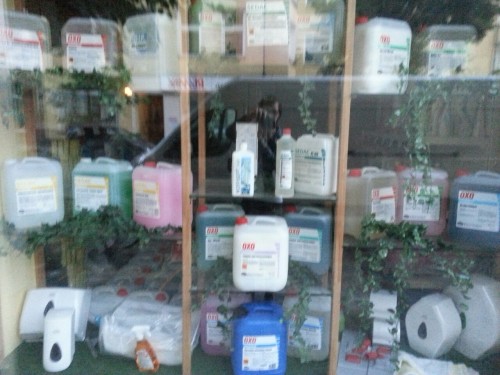
Video
http://dunkelstufe.tumblr.com/post/54852350561
Photo
http://dunkelstufe.tumblr.com/post/51867222734
][[[]]][
http://dunkelstufe.tumblr.com/post/45685971310
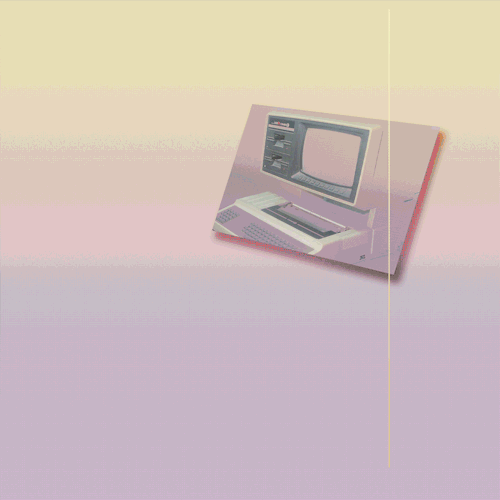
][[[]]][
Mein kleines Traumschiff <3
http://dunkelstufe.tumblr.com/post/45607502881
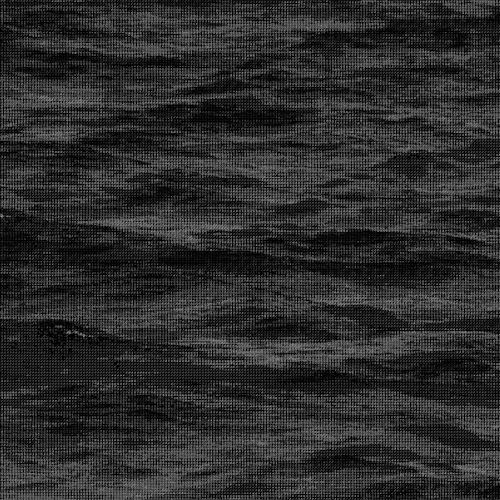
Mein kleines Traumschiff <3
pootee: Lewk Wilmshurst
http://organutan.tumblr.com/post/43837188740
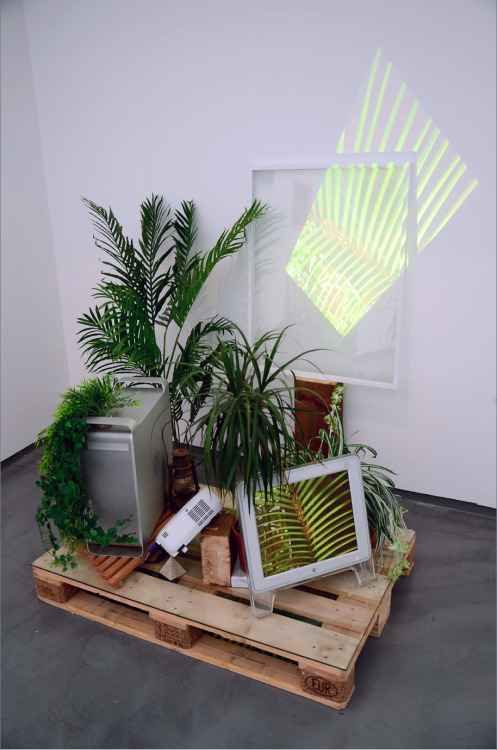
Photo
http://organutan.tumblr.com/post/30833570680
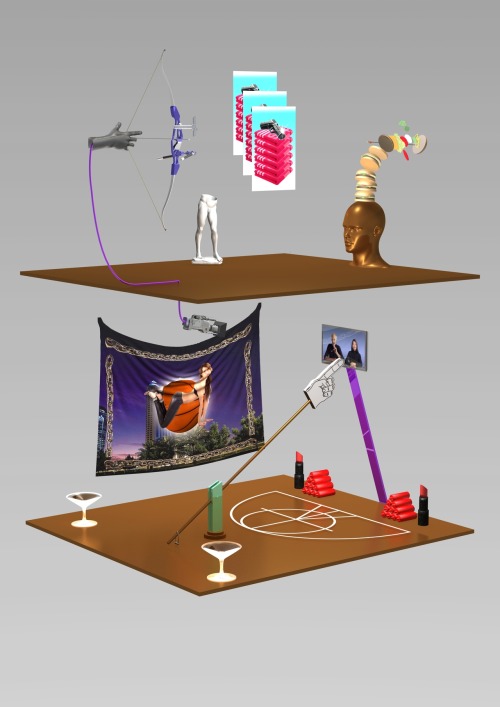
Photo
http://organutan.tumblr.com/post/30252290174
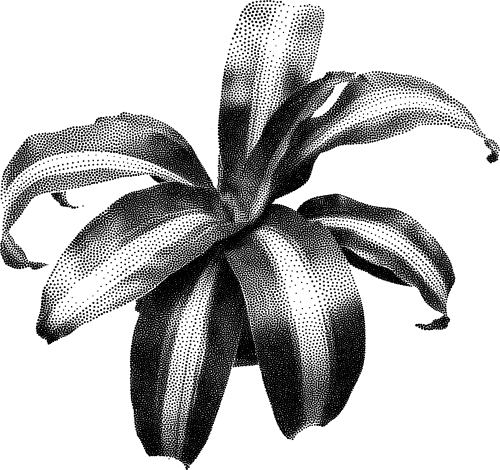
http://www.flickr.com/photos/jjpeng/7794526464/in/contacts/
http://organutan.tumblr.com/post/30167657223
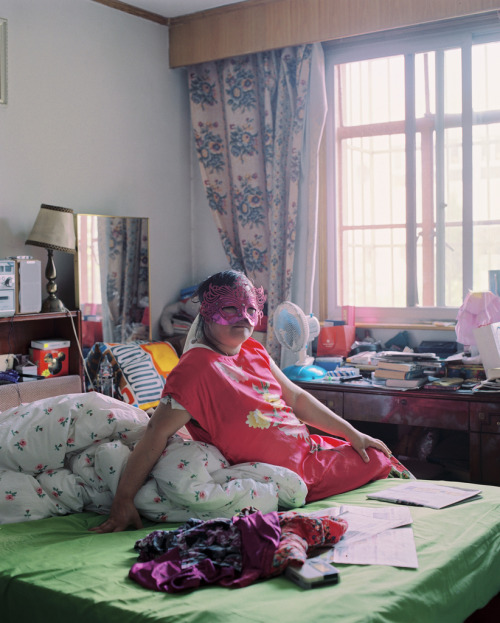
http://www.flickr.com/photos/jjpeng/7794526464/in/contacts/
Photo
http://organutan.tumblr.com/post/29787295492
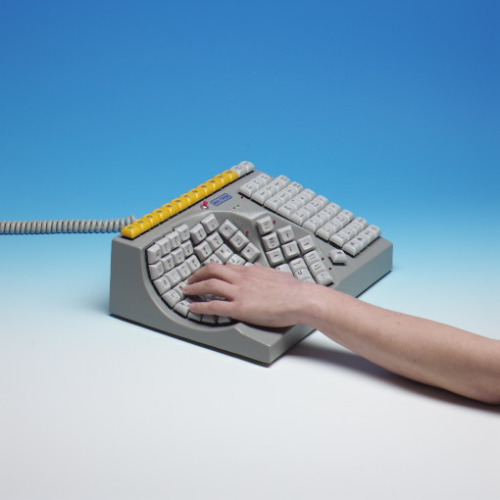
Video
http://organutan.tumblr.com/post/29403647091
primitivefeathers: Barbara Kasten, 1980
http://organutan.tumblr.com/post/28997294049
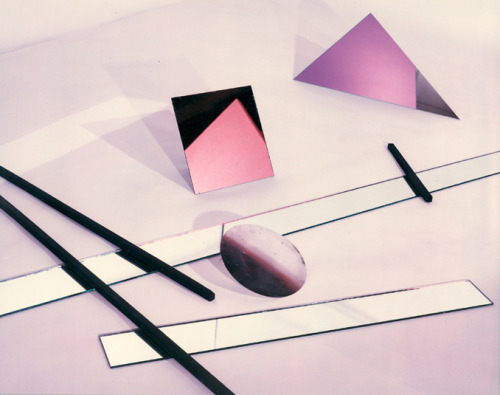
Barbara Kasten, 1980
Photo
http://organutan.tumblr.com/post/28979196655
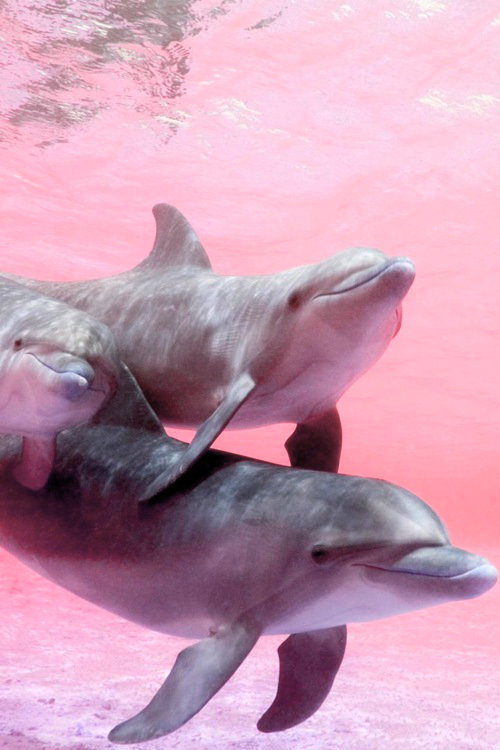
L4_1
http://sebastianthewes.optokoppler.org/?p=1368
Video 4K, 6.40min, Portrait Mode, 2019
L4_2
http://sebastianthewes.optokoppler.org/?p=1365
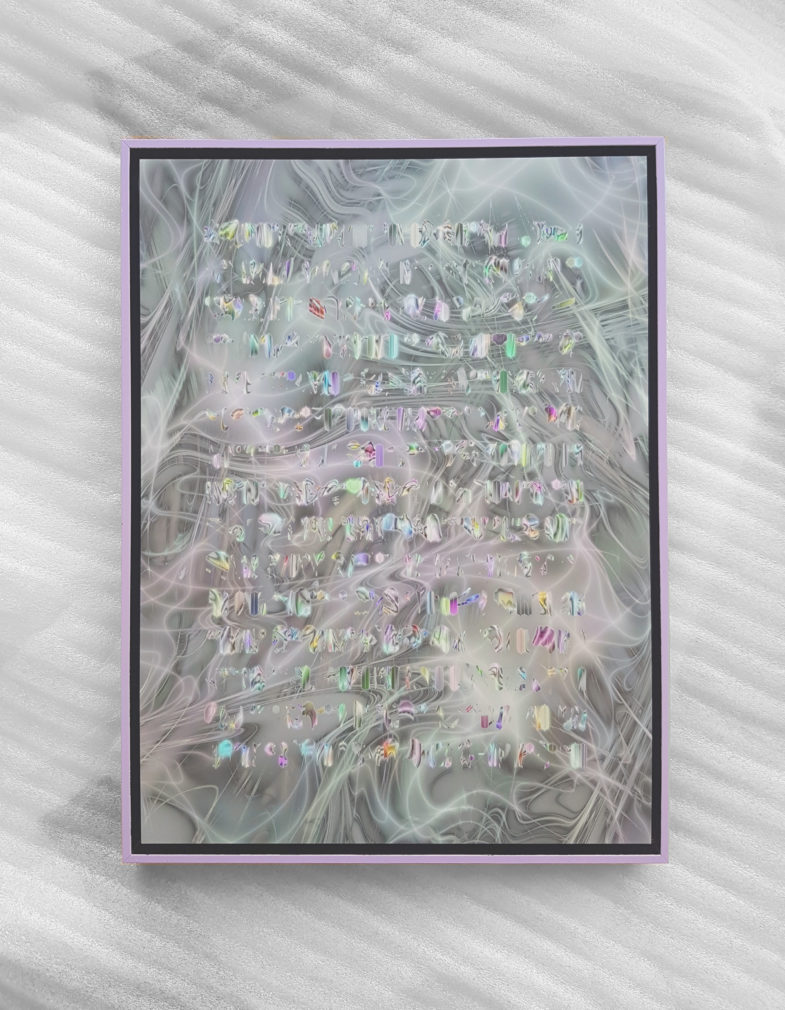 Edition of 7 Uniate's + 2 AP
Edition of 7 Uniate's + 2 APRen 1
http://sebastianthewes.optokoppler.org/?p=1295
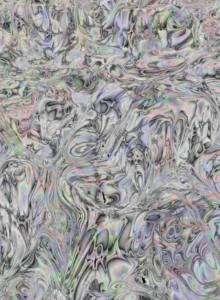
Nature Simulation 3
http://sebastianthewes.optokoppler.org/?p=1293
Nature Simulation 2
http://sebastianthewes.optokoppler.org/?p=1233
Soundinstallation new talents: destination Kunsthaus NRW, Kornelimünster, 2017
Photo: B.BabicNature Simulation 1
http://sebastianthewes.optokoppler.org/?p=1231
5 channel sound installation. New Talents Biennale Cologne 2016. Winner of the audience award.
Shift Series 2
http://sebastianthewes.optokoppler.org/?p=1109
Oleander
http://sebastianthewes.optokoppler.org/?p=1073
Maike Minzky
http://minzky.optokoppler.org/?p=324
Kölner Bucht Küššk
http://minzky.optokoppler.org/?p=920
https://soundcloud.com/gotmorka/kolner-bucht-kussk-live This is the live version of "Kölner Bucht Küššk" which got released on the double CD "Landscapes of Fear" on Grünrecorder in 2015. The above recording was made in the auditorium of the Academy of Media Arts in Cologne during the release concert. Buy CD: http://www.gruenrekorder.de/?page_id=14261 Reviews: http://www.gruenrekorder.de/?page_id=14261#reviews Landscapes of Fear | Various Artists | CD Sound Art Series by Gruenrekorder Germany / 2015 / Gruen 153 / LC 09488 / GEMA / EAN 4050486922392 “Landscape is a natural scene mediated by culture. It is both a represented and a presented space, both a signifier and a signified, both a frame and what a frame contains, both a real place and its simulacrum, both a package and the commodity inside the package.” (1) A metal fence, about 6 metres high, in the background. A group of people sitting closely aligned on the upper edge, detained by the presence of the border police. A strip of bushy vegetation for sight protection in front of the fence, a bit farther aside some taller palm trees. An ascending hill behind the fence, dry grass, rock, soil. The well cared for, wavy green of a golf course in the front, two people dressed predominantly in white standing on the lawn, one of them is about to swing the golf club, the other one regarding the events on the other side of the fence. (2) If an image like this – at least temporarily – draws media attention to fundamental questions of humanity and territoriality in the EU refugee policy, then this photographic scene at the same time also illustrates situational, constitutive moments for localised attributions or links between places and experiences of fear and despair. The profane ordinariness of repeatedly superposed, yet radically diverging perceptions and adoptions of spaces by different social groups and individuals that is displayed in colliding situations, thus describes forms of cooperation, conflict and coexistence in a way that often appears grotesque or absurd, sometimes cynically cold. While such documentations of moments of contingent encounters are sometimes represented in an almost more than obvious way, these observable constellations of alleged exemplary antipodes still have concrete, realistic equivalents beyond medial production or political exploitation. Experience of place and position within locations becomes part of a confusing mixture of localisation and dislocation, which in turn are connected to aestheticised adventure landscapes. Those can be analogies of transitory arrival areas, save shores, touristic functional zones, territory fortified by border barriers, or military operation areas. Space reframed to become a landscape – in individual perception, this transformation hardly ever happens without emotional attachment. From a general perspective or becoming operative in a very subjective way, fear being one possible element of this process percolates both an inner experience and the spaces and places of events. Isn’t it ready to smell, to see, to hear, or to recognise in other ways everywhere “here”? Knowledge about the spaces of fear, handling danger zones and threat scenarios, continuing vague or concrete alert feeling as an aspect of life, information about one’s self in a state of fear – aren’t there constant comparable appeals and demands in order for us to condition and optimise ourselves in a permanent mode of a “training camp”? Territorial conflict zones, no man’s land, local recreation areas, wellness resorts, safety corridors, wildlife reserves, restricted areas, death zones, no-go areas, gated communities, motion profiles, killing fields, shelter sites, reception camps, coach circuits and Segway tours through “dangerous territory”. In the face of such terms and events, and looking at both individual and social perspectives on addressing space and fear – what is it that forms present, contemporary Landscapes of Fear? Questions like these, along with Yi-Fu Tuan’s (3) book that provided the title, stood at the inception of the present CD-project that resulted from the seminar series Unsite Temporalities at the Academy of Media Arts Cologne. (4) The project focused on sound-related aspects and auditive experiential modalities for tracing the current conditions for a political and social exploitation of fear from a spatial (e.g. geographical, territorial as well as topological and auditive) viewpoint, in order to specifically examine the individual, subjective interests of the participants. Acoustic artwork, performances, audio-visual installations, soundscape compositions, radiophonic and documental works were the subjects of analysis and artistic practice alongside productions and material related to trash, horror and science fiction. Excursions to places in the wider surroundings of the “Kölner Bucht” that are historically described as “dangerous areas”, “death zones”, “places of fear”, or “restricted areas”, or that are still declared or well-known as such included hands-on field studies and explorations. The overleaf topographic map of the area shows some examples. The map also shows further spatial markings relevant for the project. Temporary localisations and potential zonings are registered in the map along with current political and geographical facts, as well as historic sites; also, some imaginary or medial-fictional spatial positions are marked in addition. The contributions collected in Landscapes of Fear cover the participants’ different methods and experiences from specifically developed projects on the connection of sound, space and emotion. Multi-layered overlappings of inner and outer spaces, interconnections of forms of acoustic documentation and the phantasms of a sonic fiction, Deep Listening experiments and data analysis – some terms that exemplify the participants’ techniques and subjects taken up during the project. The data of geographical contour lines of existing areas, for example, form the basis for an audification that reads out these topographic profiles as waveforms. Psychological border experiences are set down in text and verbally staged via radiophone. Audio documents (interviews) are tonally processed in a radical way that is based on the spatial model of an existential, physical injury. Urban paths, generated by GPS navigation are translated into an instrumental composition for two stringed instruments. Components and micro particles of verbal communication reveal explosive, controversial potential for aggression within the club and party scene, or coagulate into a stream of intense, yet pale residual sound that causes a “listening deletion” rather than being a basic means of phonetic communication. The present works reflect a wide range of analysis on the part of the participants regarding the possible manifestations of fear-causing spaces. Among them are detailed observations as well as quite irritating formulations of tonal (landscape-) explorations, acute areas of conflict, commonplace phobias, sonic dissociations and virtual modifications. The works are communicated experiences, aesthetic experiments, tonal speculations and fictionalisations – all of which challenge the positioning of one’s self within an unabated topicality and continuing presence of Landscapes of Fear. „The minimum requirement for security is to establish a boundary, which may be material or conceptual and ritually enforced. Boundaries are everywhere, obiviously so in landscapes of fences, fields and buildings, but equally there in the worlds of primitive peoples. Boundaries exist on different scales. Minimally and perhaps universally, three are recognized: the boundaries of the domain, of the house and of the body. […] Fear is not only objective circumstance but subjective response. […] Landscapes of Fear are not permanent states of mind tied to invariant segments of tangible reality; no atemporal schema can neatly encompass them.“ (5) 1 W.J.T. Mitchell: „Imperial Landscape“; in: W.J.T. Mitchell (Hg.): Landscape and Power. Chicago, 2002 2 2014 von der Agentur Reuters verbreitete Fotografie einer Situation am EU-Grenzzaun der spanischen Exklave Melilla in Marokko (Fotograf: Jose Palazon) 3 Yi Fu Tuan: „Landscapes of Fear“. Oxford, 1980 4 2014 – 2015 5 Yi Fu Tuan (1980)
ARM11
http://minzky.optokoppler.org/?p=898
ARM11 is a series of algorithmic created graphics calculated on the ARM11 processor architecture. ARM stands for Acorn RISC Machine, later Advanced RISC Machine. It is a family of reduced instruction set computing(RISC) architectures for computer processors.
Otha
http://fleischfarben.optokoppler.org/?p=1199
This is what happens when you push down on your eyelids
http://fleischfarben.optokoppler.org/?p=1196
Niodrara
http://fleischfarben.optokoppler.org/?p=1194
Polarschleife
http://fleischfarben.optokoppler.org/?p=1191
Lichter
http://fleischfarben.optokoppler.org/?p=1189
C V L T S - Flooded Forest / Microrangers from AAVV on Vimeo.
Wanderschleier
http://fleischfarben.optokoppler.org/?p=1187
Berechnet
http://fleischfarben.optokoppler.org/?p=1184
Mit Liebe in jeder Schraube
http://lautebaum.optokoppler.org/?p=241


Chaos regiert
http://fleischfarben.optokoppler.org/?p=1182
Tandem//♡
http://fleischfarben.optokoppler.org/?p=1179
Two Things from Duncan Malashock on Vimeo.
Niemand allein zu Haus
http://fleischfarben.optokoppler.org/?p=1174
Gedankendesigner
http://lautebaum.optokoppler.org/?p=205





Plastikprophet
http://lautebaum.optokoppler.org/?p=200

Zaubern
http://lautebaum.optokoppler.org/?p=173
Glimmerkoblenz
http://lautebaum.optokoppler.org/?p=143

Warme Wesen
http://lautebaum.optokoppler.org/?p=66


Magenmassage
http://lautebaum.optokoppler.org/?p=64
Diafragma Smarter
http://lautebaum.optokoppler.org/?p=61

Lummerland
http://lautebaum.optokoppler.org/?p=58




